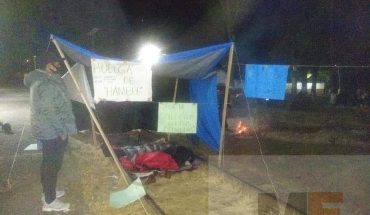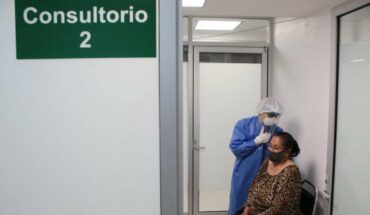biologist Patricia Valdespino, do ctora in marine sciences and Limnology by the National Autonomous University of Mexico (UNAM), is collaborating on a project managed by Chile and Mexico through the Mexican Agency of international cooperation for development (AMEXCID) and the Agency Chilean international cooperation for development (AGCID), the Ministry of Foreign Affairs of Chile. The project “Impacts of the microbial diversity of polar ecosystems against environmental change” has a duration of two years and during February collected material on King George Island.
Among their field work, was the collection of samples of microbial mats (also known as biofilm or microbial shrubs) along with its surrounding environment, in this case Antarctic soils. The activity carried out at the end of February at the King George Island with the collaboration of the biotechnologist of the Chilean Antarctic Institute (INACH), Alejandro Font. The material shall be subjected to an analysis of metagenomics, i.e. the sequencing of all genetic material that contain samples for further collaborative bioinformatics analysis.
“A study thus requires a large group of scientists, in this case, Mexicans and Chileans,” indicates the specialist. Those who coordinate this project are Dr. Marcelo González, head of the scientific Department of INACH, and Dr. Luisa Falcón, of the Institute of ecology of the UNAM.
“This is just chained to an earlier draft that had the support to Argentine and Uruguayan researchers”, adds Valdespino, the opportunity to be present in databases Artigas (Uruguay), and Carlini (Argentina), previously in 2016 and 2017, for a sampling of similar characteristics.
Iinvetigadores Marcelo González and Patricia Valdespino researcher said that the questions that is exploring, relate the Biogeochemistry: it aims to investigate in the understanding of the role that meet the microbes in the recycling of some main elements of life, as well as see their patterns of diversity, survival strategies that have and its adaptability to the conditions of climate change.
“It is the third time that I to King George Island will make this sampling. While this occasion lasted a few days, this was better directed, not as exploratory as the first, for what we hope to support more accurately in our questions. As I am working in California (United States), some tests will do them there”, explains.
Antarctic microbial mats the microbial mats can gather hundreds or thousands of tiny species. In a film so thin, it is possible to find a wide variety of microorganisms. This makes that rugs are the most diverse in the Terrestrial Antarctic environments.
“The Antarctic provides a unique opportunity in the objects of study for scientists. In my case, having studied in tropical systems, this was a significant change”, he says.
In response, highlights the contribution that the Chilean Antarctic Institute professionals perform in the analysis of the diversity of the Microbiome of Antarctic sponges and other marine invertebrate organisms, using massive sequencing tools DNA, as well as bioinformatics, all tests they carried out from Punta Arenas in the building of “Jorge Berguño Barnes”, the INACH Antarctic Labs.
On the other hand, among the questions that Valdespino seeks to resolve are the patterns of distribution, presence or absence of microorganisms and characterization of biodiversity and environmental drivers.
After the above and following the metagenomics analysis, scientists will work on the description of survival strategies for the extreme environments of low availability of nutrients, cycles of freezing and circulation, some aspects of the colonization and responses to environmental change strategies.
This project is part of the national programme of Antarctic Science 2019 and is in its final year of implementation.
translated from Spanish: Researchers studying microbial diversity of Antarctic soil
April 8, 2019 |





